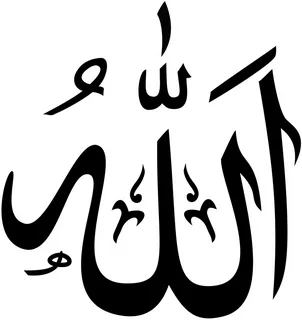When words fall short, art takes over. That’s precisely what Allah names calligraphy represents—a beautiful intersection of faith and expression. It’s not just about Arabic letters dancing gracefully across a canvas. It’s about connecting with the Almighty on a deeper, visual, and emotional level. This unique Islamic art form doesn’t just hang on walls; it settles into hearts.
For centuries, Muslim artists have turned to calligraphy to represent divine verses, names, and messages with reverence and elegance. Especially, the 99 names of Allah, each portraying a unique attribute of the Creator, are often transformed into mesmerizing artwork that elevates both spaces and souls.
Why Allah Names Calligraphy Holds a Sacred Value
Allah Names Calligraphy isn’t just decorative. It’s spiritual. Muslims believe that reflecting on the Asma ul Husna, the 99 names of Allah, helps develop a closer relationship with God. Each name, like Ar-Rahman (The Most Merciful) or Al-Hakeem (The All-Wise), carries meaning that encourages believers to embody those values in everyday life.
Calligraphy becomes a sacred medium that brings those attributes to life in a tangible form. When you’re looking at Allah Calligraphy, you’re not just admiring a design—you’re engaging in remembrance (dhikr). The strokes become prayers, and the ink, a silent sermon.
Styles That Speak to the Soul
Arabic calligraphy isn’t one-size-fits-all. Different styles bring different emotional tones to Allah names calligraphy. Some of the most popular forms include:
-
Thuluth: Known for its curved letters and elegance. Often used in mosque decorations.
-
Naskh: More readable and simple, making it ideal for texts.
-
Kufi: Bold and geometric, used in modern minimalist designs.
-
Diwani: Ornamental and dramatic, often found in regal contexts.
Each style adds a different layer of depth, whether you’re designing an art piece for your home or seeking spiritual inspiration through visual means.
Allah Calligraphy in Modern Design
In recent years, Allah Calligraphy has found its place in contemporary settings too. From home décor to digital art, the names of Allah are being represented in ways that merge traditional beauty with modern aesthetics. Artists now use acrylics, wood engravings, metal etchings, and even digital vector art to bring this sacred form to life.
In minimalist homes, a clean, gold-accented calligraphy piece can serve as both a design statement and a source of peace. In prayer rooms, richly textured calligraphy transforms the atmosphere into one of reflection and worship.
The versatility of Allah Calligraphy is what makes it timeless.
Cultural and Global Impact
While rooted in Islamic tradition, Allah names calligraphy has found admirers across cultures. In Turkey, the Ottoman tradition made it a central part of mosque architecture. In Iran, it fused with floral Persian motifs. Even in Western countries, Muslim communities have kept the art alive through exhibitions, workshops, and online platforms.
With social media and online stores, the reach of this art form has grown immensely. Today, a young Muslim artist in Jakarta can sell an Allah Calligraphy canvas to a customer in London. The message remains the same: unity through divine names.
Collecting or Gifting Allah Calligraphy
Whether you’re purchasing for yourself or as a heartfelt gift, Allah Calligraphy carries emotional and spiritual weight. It’s an ideal wedding present, Eid gift, or housewarming gesture that transcends material value. Framing the 99 names of Allah in a beautiful layout not only adorns a space but blesses it.
Many people also customize pieces with family names or Quranic verses surrounding the Allah names, making it deeply personal and meaningful.
How to Choose the Right Allah Names Calligraphy
If you’re planning to bring this sacred art into your life, consider the following:
-
Size and Space: A large piece can serve as a focal point in your living room, while smaller ones are perfect for bedrooms or offices.
-
Color Scheme: Match it with your home’s theme. Classic black and gold never go out of style.
-
Material: Canvas, metal, wood, or even backlit glass—all offer different textures and ambiance.
-
Calligraphy Style: Choose one that resonates with your personal connection to the divine.
Preserving the Sacred Art
As with any treasured art form, Allah names calligraphy deserves preservation. Always handle with clean hands, avoid moisture, and hang in respectful areas of your home. Digital formats can be backed up and printed again, but traditional art needs a bit more care.
Many collectors invest in glass-framed pieces or sealed wooden frames to protect the ink and material over time.
Conclusion
Allah Names Calligraphy isn’t just visually striking—it’s spiritually grounding. Each piece serves as a reminder, a connection, and a declaration of faith. Whether you’re decorating your home, gifting a loved one, or simply seeking a deeper relationship with the Creator, this sacred art form delivers in both beauty and meaning.
As Allah Calligraphy continues to evolve with trends and technologies, its essence remains rooted in reverence. Embracing this divine art is not only a nod to Islamic heritage but a step closer to spiritual harmony.
